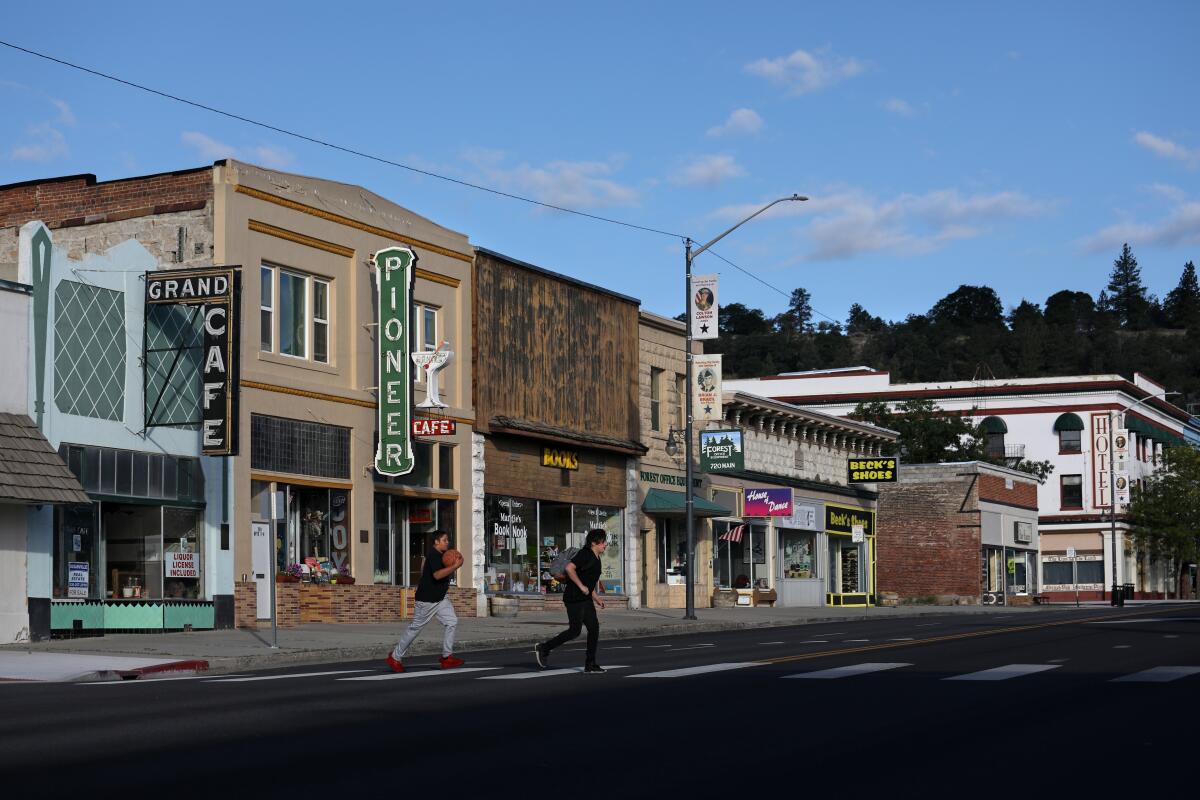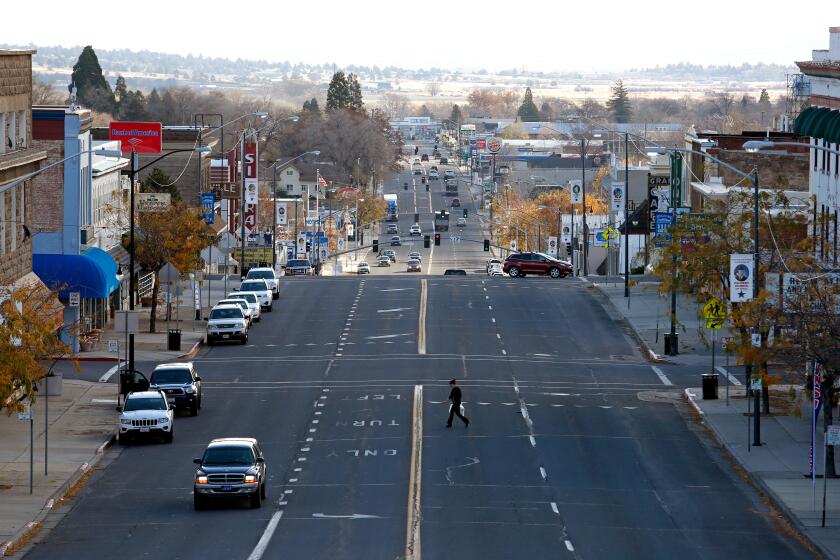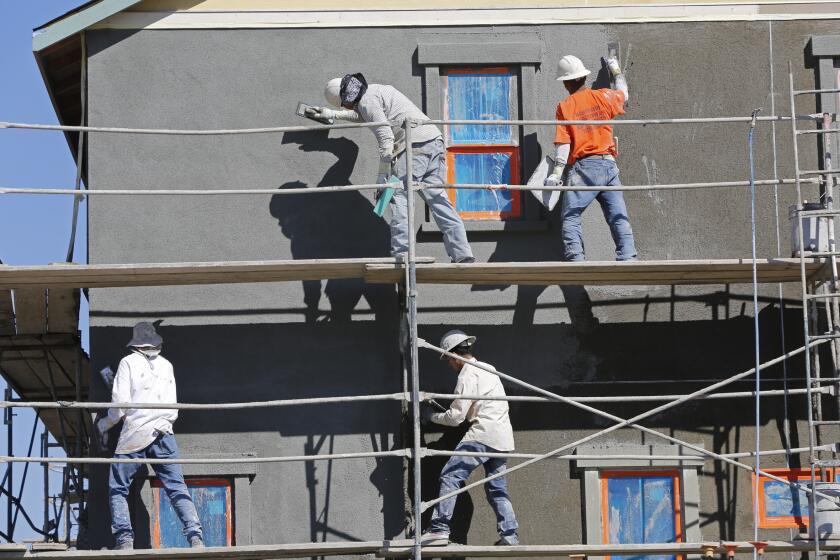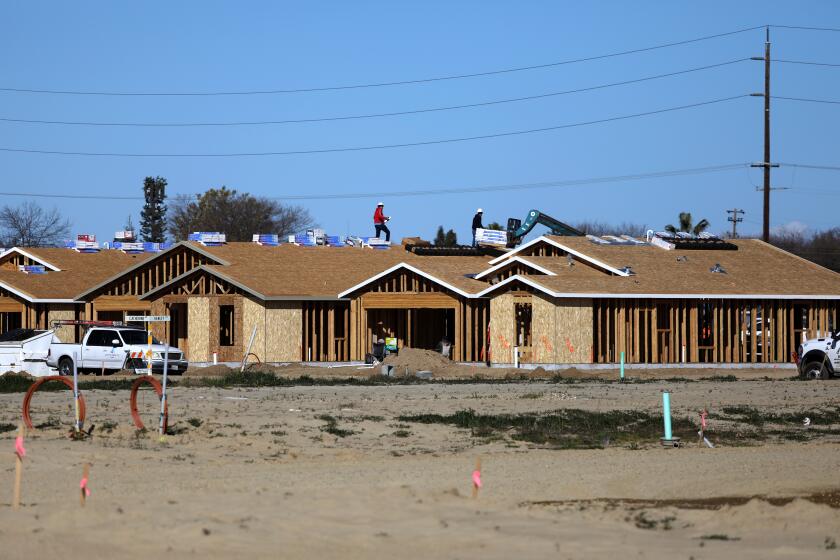Population losses hit Northern California cities much harder than Southern California cities

- Share via
Cities in Northern California saw more severe drops in population during the pandemic than those in Southern California, new census data show, with Bay Area communities hit particularly hard.
The same data show that many of the cities that grew the most between July 2020 and July 2022 were in Southern California.
Experts said that several factors might explain the north-south divide. But one likely reason is the Bay Area’s tech-rich economy. Many tech companies allowed employees to work from home and it is likely that “remote work has impacted the Bay Area more,” leading to an exodus of workers in Northern California, said Dowell Myers, a professor of policy, planning and demography at USC.
San Francisco has generated headlines recently due to its dramatic population loss over the last two years, but other Bay Area cities were also ranked as having some of the biggest population losses.
The county remained the nation’s most populous. California saw a significant loss of people in several counties, including Santa Clara, Alameda and Lassen.
San Jose lost almost 40,000 residents and dropped out of the top 10 list of the nation’s most populous cities.
Highest rate of population loss among big cities
- San Francisco, -7.1%
- Daly City, -4.4%
- Berkeley, -4.2%
- San Mateo, -4.1%
- San Jose, -3.8%
Experts expect population loss in major cities to slow as the pandemic recedes into the past, but they say the state’s housing crisis — another driving factor — won’t be going away anytime soon.
The lion’s share of the cities that gained the most people between July 2020 and July 2022 was in suburban and exurban areas across the state. A Times analysis showed that these areas, largely in the Central Valley, also led the way in housing gains.
Northern California cities were also likely affected by “less construction and higher prices” for housing, Myers said.
See the ZIP Codes in California which had the most net move-ins and move-outs from 2019 to 2022. One million more people moved out of California homes than into them over the last four years.
The census data underscore some trends that have been seen during the COVID-19 crisis. Urban centers such as downtown San Francisco emptied out as tech workers stopped coming in to work, causing local economic distress. Some more far-flung areas such as Placer County and the Lake Tahoe region saw an influx of people from cities who were able to work remotely.

High housing costs were another key factor in the population shift, experts say. With housing costs rising, some Californians used the pandemic as an excuse to sell and move to cheaper areas. But the real estate price boom made it harder for others to move in.
“Hundreds of thousands more people would desire to live in the Bay Area — if not millions — and Southern California,” said Michael Lens, a professor of urban planning and public policy at UCLA, “if we made it easier to accommodate those people through more housing units and presumably more affordable housing.”
Of the 30 cities, counties and unincorporated areas in California that shrank the most, only two were in the southern part of the state, in Kern County: Taft, which lost 5.8% of its population, and Tehachapi, which lost 4.6%.
Cities and counties in metropolitan Southern California were absent from the top 30 list, with the cities of Commerce and Cerritos each losing about 4% and placing 36th and 41st, respectively, in that ranking.
Among cities with populations of more than 100,000, three of the five cities with the highest rate of increase were in Southern California, with the other two in the Sacramento and Fresno exurbs.
Highest rate of population increase among big cities
- Menifee, 6.0%
- Roseville, 4.3%
- Clovis, 3.2%
- Murrieta, 2.2%
- Jurupa Valley, 2.2%
Menifee, which added over 4,500 homes between 2019 and 2022, has been intentional about its growth, city manager Armando Villa told The Times in March.
Recent census data show urban California counties shrunk in population and rural counties grew, but trends are moving back to the pre-pandemic status quo.
Meanwhile, a number of smaller cities with populations under 100,000 — many in Northern California — saw similar losses.
Susanville lost more than 15% of its population in the two-year span, but that was likely due to the 2021 Dixie fire, which burned more than a million acres and destroyed over 1,400 homes and other structures, according to the California Department of Forestry and Fire Protection. The town is also expected to lose one of its biggest employers, with the impending closure of the California Correctional Center.
As California’s population has dropped, some Orange County cities have seen high numbers of movers in, while others have struggled.
Fire was also a likely factor in the city with the highest rate of population increase in that stretch — Paradise.
The city showed some signs of rebuilding after the 2018 Camp fire, gaining nearly 2,000 people after losing some 20,000 — almost 85% of its total residents — after the deadliest conflagration in state history.
But Lens said an increase in population — often connected to a boost in housing — is “not what we would hope” for in less dense areas.
Though growth in less dense areas isn’t necessarily a bad thing, he explained, the areas that need housing the most and can grow more efficiently are the major cities.
California’s population continued to shrink last year, but it built housing at a pace not seen since 2008, according to a state Department of Finance report.
In a housing crisis, places such as Lathrop or Calimesa are “not where the demand is strongest,” so new housing may not be as direly needed, and the rural zones seeing growth are “not the most economically productive areas of the state,” he said.
Also, from a climate perspective, Lens noted that less densely populated areas lead to longer commutes and are “not the ideal places to put housing.”
More to Read
Sign up for Essential California
The most important California stories and recommendations in your inbox every morning.
You may occasionally receive promotional content from the Los Angeles Times.















